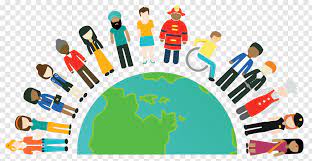Introduction :
The social dimension, which includes many facets of social interaction, relationships, conventions, and institutions, is an essential part of human life. It describes the interactions, relationships, and societal navigation that take place between people, groups, and communities. Understanding social dynamics is crucial for understanding human behaviour, society systems, and interpersonal interactions.
The social element is fundamentally about social interaction. Being social creatures by nature, people look for company, support, and a sense of belonging. We may express ourselves, share our experiences, trade ideas, and work together to accomplish shared objectives when we interact with others. It takes place through both verbal and nonverbal cues such body language, gestures, and facial and emotional.
The social element is not complete without social ties. These links can take on many different shapes, such as those with family, friends, love partners, coworkers, and the community. They provide people possibilities for personal development, closeness, emotional support, and a sense of belonging. Social connections have an impact on our identity, self-worth, and general wellbeing.
The social aspect includes important components like norms and values. Societies create social norms, or collective expectations and standards, to regulate behaviour and create social order. Norms, which include things like etiquette, conventions, morality, and laws, can differ throughout cultures and societies. Values serve as a representation of the core ideals and ideas of a society or a group, influencing attitudes, considerations, and conclusions.
In the social component, institutions and organisations are essential. These organisations offer the frameworks, processes, and structures that control interpersonal relationships and encourage group activity. Governmental agencies, educational institutions, religious organisations, healthcare systems, and legal systems are examples of institutions. They affect social roles, obligations, and opportunities while also impacting how societies are organised and run.
The process of socialisation is closely related to the social component. It alludes to the ongoing development of the abilities, information, attitudes, and values required for productive participation in society. Early childhood interactions with family, classmates, and educational environments serve as the foundation for socialisation. It goes on all through life, responding to shifting social milieus and societal roles. Our identity, social roles, and perception of society standards are all shaped through socialisation.
The social element must take into account factors like power relations and social inequalities. Societies frequently have hierarchies, where some people or groups have greater rights, resources, or authority than others. Economic inequalities, gender disparities, racial and ethnic prejudice, as well as unequal access to chances, opportunities, and healthcare are just a few of the ways that social inequality can appear. Promoting social justice and developing inclusive communities depend on understanding and resolving these processes.
The social element must take into account factors like power relations and social inequalities. Societies frequently have hierarchies, where some people or groups have greater rights, resources, or authority than others. Economic inequalities, gender disparities, racial and ethnic prejudice, as well as unequal access to chances, opportunities, and healthcare are just a few of the ways that social inequality can appear. Promoting social justice and developing inclusive communities depend on understanding and resolving these processes.
Conclusion :
In conclusion, the social element includes the intricate network of connections, norms, institutions, and processes that influence human society. It affects how we act and interact with others, as well as how we feel about ourselves generally. It also reflects larger socioeconomic systems and disparities. Forging strong communities, fostering social cohesion, and striving towards a more fair and inclusive world require an understanding of the social component.
Social Aspect




